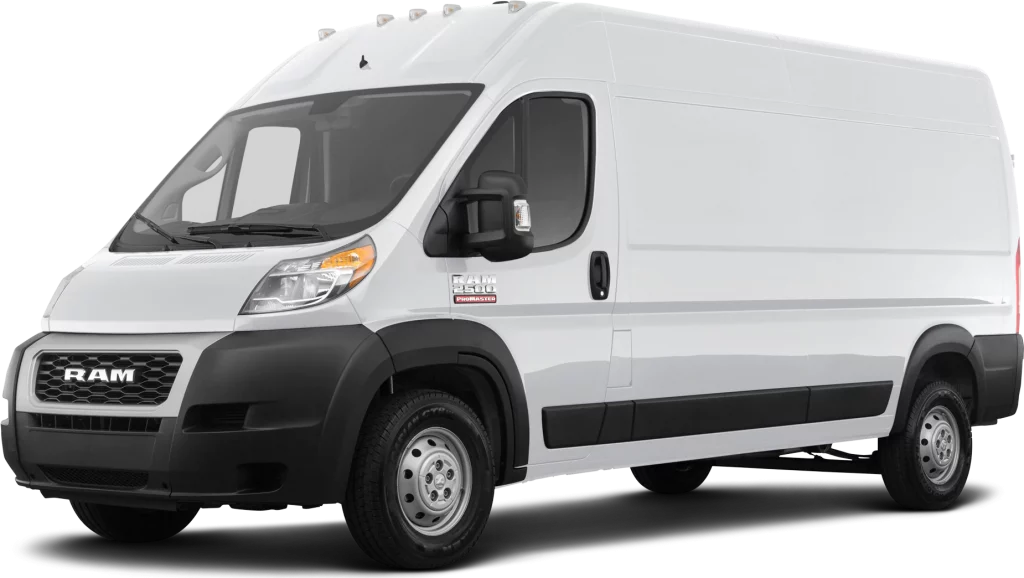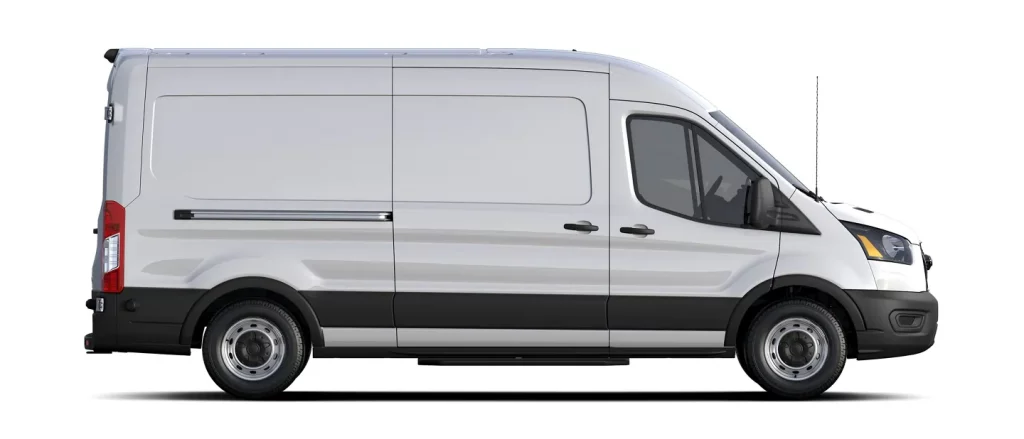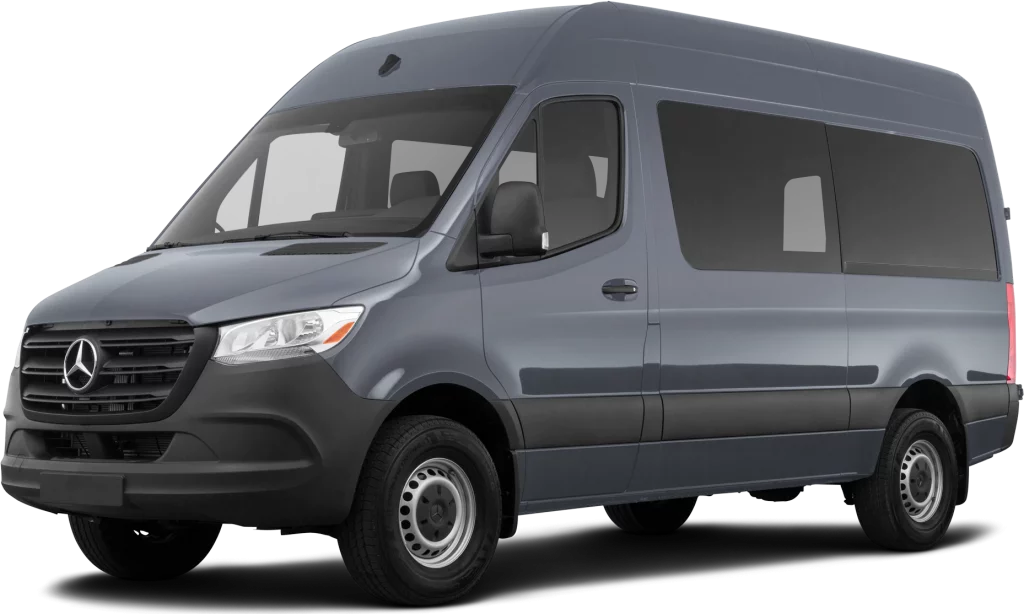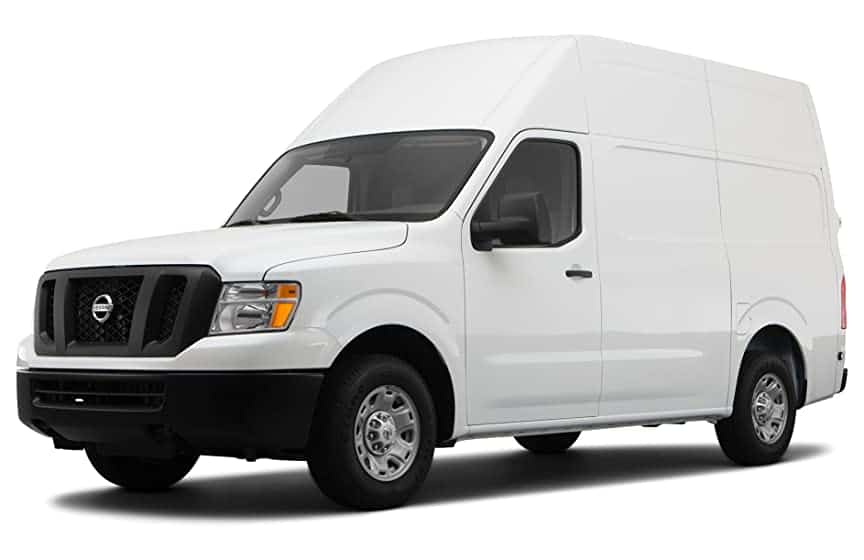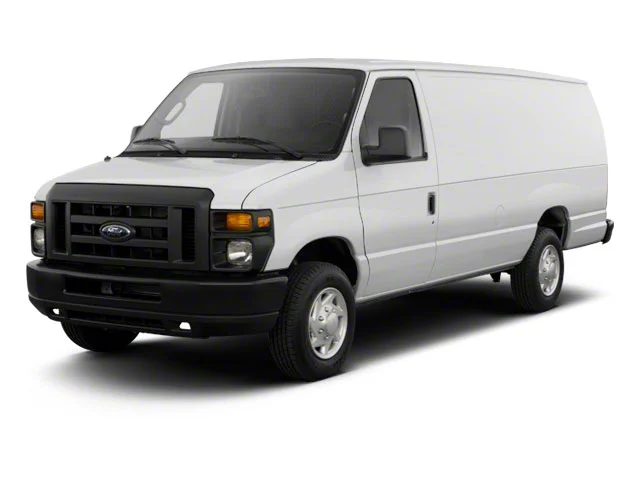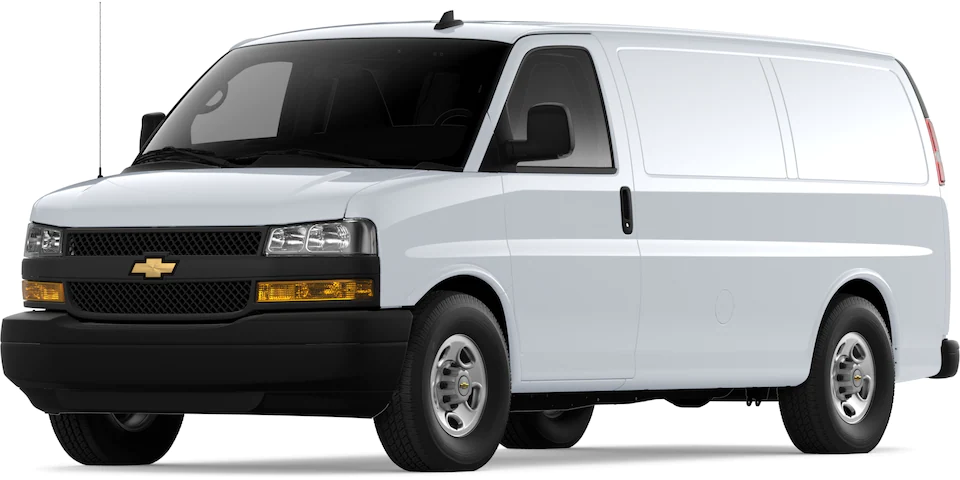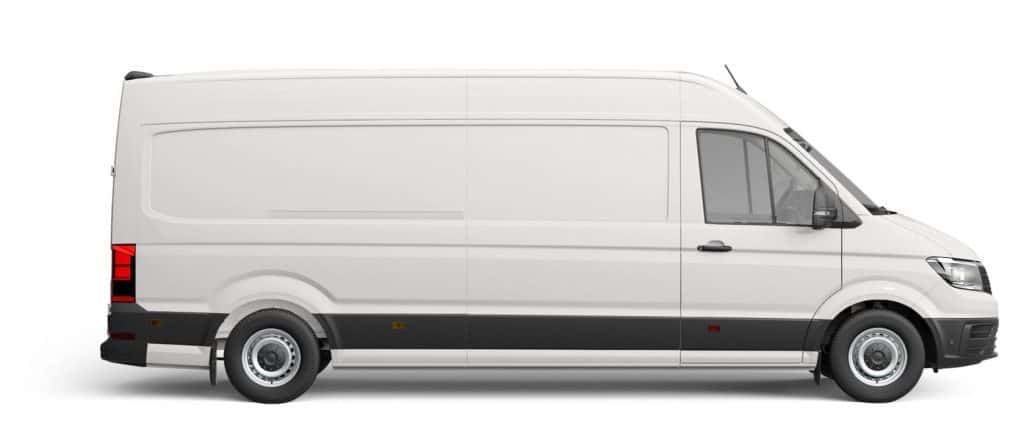So you’ve been bitten by the vanlife bug and want to know which van is best for a camper conversion?
Whether you dream of taking weekend trips, family vacations, or even transitioning to living in a van full-time, a camper van will give you excellent access to the outdoors.
But professionally converted campers can be expensive, or they may lack the custom features and specific look you want.
For these reasons and more, a growing number of people are opting to go for a DIY approach.
But how do you choose a base vehicle? Let’s take a look at what options are available, what pros and cons each may have, and how to choose the best van for your camper conversion.
What to look for when choosing a van to convert into a camper?
| Van | Interior Height | Interior Width | Cargo Length | Wheel-base | Fuel | Price |
|---|---|---|---|---|---|---|
| Ram ProMaster | 64″, 74″ | 73″ | 112″, 132″, 146″ | 136″, 159″ | Gas | $31k+ new |
| Ford Transit | 57″, 72″, 81″ | 70″ | 126″, 144″, 172″ | 130″, 148″ | Gas, Diesel | $35k+ new |
| Mercedes Sprinter | 68″, 79″ | 70″ | 133″, 174″, 190″ | 144″, 170″ | Gas, Diesel | $35k+ new |
| Nissan NV | 56″, 77″ | 70″ | 120″ | 146″ | Gas | $30k+ new |
| Ford Econoline | 55″ | 73″ | 120″, 140″ | 138″ | Gas, Diesel | $10k+ used |
| Chevrolet Astro | 50″ | 69″ | 93″ | 111″ | Gas, Diesel | $2k+ used |
| VW Crafter | 65″, 76″, 84″ | 70″ | 102″, 142″, 169″, 185″ | 128″, 144″, 170″ | Gas, Diesel | £10k used |
| School Bus | 72″ | 90″ | Varies | Varies | Gas, Diesel | $3k+ used |
Height
Interior height will be an important factor when considering which van will suit your needs.
The more time you expect to spend inside your van, the more important standing room will be.
For getting dressed, cooking, washing, and generally moving around inside comfortably, being able to stand inside your van makes everything a lot more comfortable.
It’s easy to assume that a van with standing height is best, but that might not always be the case.
If you’re going to be doing a lot of city camping, low top vans will have the benefit of being able to fit into all kinds of parking garages, and will also arouse less suspicion if being stealth is a factor.
Width
The interior width of your van will be more or less important depending on which layout you decide to go for.
If you plan to have the bed across the van, sideways, then some vans will simply not be wide enough to accommodate it.
Even some of the most popular conversion vans like the Mercedes Sprinter are not really wide enough for most people to sleep horizontally.
There are modifications that can be made to widen a van to facilitate a sideways bed. It involves installing protruding panels on one or both sides. While some professional van conversion companies do make these customizations, it’s often a bit too big of a job for most DIY’ers.
Wheelbase
This is the distance between the axel for the front wheels and the axel for the back wheels. It obviously affects the length of the vehicle, but also the turning circle and general ease of maneuverability.
This could become a big factor if you’re going to be doing a lot of city dwelling. Bigger wheelbase vans will not be able to fit into some parking spaces.
The wheelbase is typically correlated with the overall length of the van and therefore the available living and storage space, but not always. Some vans will have the same wheelbase, but one will be longer than the other.
Fuel Type
Depending on how you plan to use your van, fuel type might be a factor to consider before making a purchase.
There is a significant fuel efficiency difference between diesel and gas vans. This is partly due to diesel fuel’s higher energy value than gasoline. Diesel fuel is able to offer up to 10 percent better fuel economy because of its higher energy density.
However, diesel fuel can sometimes cost more, is less widely available, and maintenance on a diesel engine can be significantly more expensive than a gasoline engine.
For certain people, a diesel engine may be better, but for most I would recommend opting for gasoline.
Windows
Windows are quite easy to add later, so if you want windows in your camper, don’t exclude windowless vans from your list of potential vehicle options.
However, while windows are easy to add later, they’re not so easy to take away.
A window is a huge insulation gap, if a van has windows all the way around, it’s going to be particularly difficult to insulate. Making it unbearable in the summer, and much more costly to heat in the winter.
So keep that in mind if you’re considering a van that has windows all the way around.
Stealth
The importance of stealth camping could have a big influence on your choice of van.
Most experienced van dwellers tend to agree that stealth is an overrated factor, but it can still be an attractive feature for those who plan to park mostly in urban areas.
There are always trade-offs, smaller vans tend to be more inconspicuous, but roof vents and solar panels are easily more easily spotted on smaller vans and can blow your cover stealth wise.
Price
Before anything else, we need to consider our budget.
Keeping in mind that after we purchase the van, we still need to have the money to build it out and make all of our customizations. As well as potentially having to buy the tools and fit out the van with all our amenities.
The good news is there are options out there for all budgets. You can pick up a used van for a few thousand dollars, or go all the way to splashing 10’s of thousands on a brand-new van.
Just weigh all the other considerations against your budget and expected conversion costs to find which vans are most suitable within your price range.
Best Vans for Camper Conversion Projects
Ram ProMaster
The Ram ProMaster is based on the Fiat Ducato chassis, so it has the same wheelbase and chassis dimensions as the Ducato.
This chassis has long been a favorite among European RV manufacturers and van convertors. With its straight angles and straight edges making it much easier to install your internal customizations.
Like most of the vans here, the ProMaster is available in a wide range of lengths and roof heights, see the chart earlier in this article for reference.
Being the widest cargo van in this list, with 6’3″ of internal width, it’s a great option for those who want to install their bed side to side.
Though as it is front-wheel drive, and with its low ground clearance, it wouldn’t be a good choice for anyone wishing to go off-road.
Click here to see some ProMaster conversion examples
Ford Transit
The Ford Transit is another popular option that is relatively new to the American market, but has been a leading conversion and commercial vehicle in Europe for decades.
With an option for an 81″ internal height (that’s 6 foot 9 inches), this is the perfect van for really tall people who want to be able to stand comfortably inside.
The Transit gets great fuel economy with its Eco-Boost engine, and with all-wheel drive models available, it’s perfect for adventurous off-roaders.
Check out more Transit conversions here
Mercedes Sprinter
The Mercedes-Benz Sprinter has become somewhat of a benchmark vehicle in the vanlife world, due to its massive internal space as well as factory 4×4 models.
While the coveted 4×4 model may be out of reach for those on a modest budget, the regular rear wheel drive models are available at a much more affordable price.
The popularity of Sprinter van conversions is such that there are many companies who make conversion kits and components that base their products around the Sprinter.
This can give you a bit of a head start when building out your own conversion.
Click here to see Sprinter conversion examples
Nissan NV
While its total cargo capacity (and therefore living area) is a bit less than that of the Transit, ProMaster, and Sprinter, I think the Nissan NV holds its own being included among those.
The high roof option of 77″ (6 foot 5 inch), makes it the second tallest interior height on this list, making it another great choice for a tall vanlifer.
The Nissan NV is built more like a truck than a van, and can be converted to a 4×4 without any modification to the wheel wells, so this makes it an attractive option for off-roading.
Ford Econoline (E-Series)
This has been replaced in Ford’s lineup with the Ford Transit, the Econoline now only comes as a cutaway. But due to their popularity in the past, they are widely available on the used market.
Still one of the most common vans on the road, you can find great deals on used models, and they are easy to get repaired and serviced.
A great option for those on a budget and those interested in stealth. A well-built van that can go to 300,000 miles if well maintained.
Chevrolet Express / Astro / GMC Savana
The commonality of the Chevy Express, together with its small form factor, make it the perfect choice for anyone who values stealth above all else.
These vans are built to last and are can be found all over the United States, making them the most budget-friendly van. Spare parts are cheap and mechanics everywhere will be well versed on working on these workhorses.
But they are among the smallest vans on this list, so unless you plan on installing a roof extension or pop-top, this is no doubt a cramped van. If you plan on spending a lot of time inside the camper, this could get a little claustrophobic.
VW Crafter
Not yet available in North America, the VW Crafter is common van throughout Europe and Oceania.
Winner of several Best Van of the Year awards, the Crafter is by far the biggest cargo van availabe.
These can be very expensive when bought new, but due to their popularity in those places they are available, used models can be bought at a very affordable price.
Some of the most striking and beautiful conversions I’ve ever seen have been built on the Crafter chassis, check the link below to see what I mean.
Click here to see VW Crafter conversion examples
Minivan
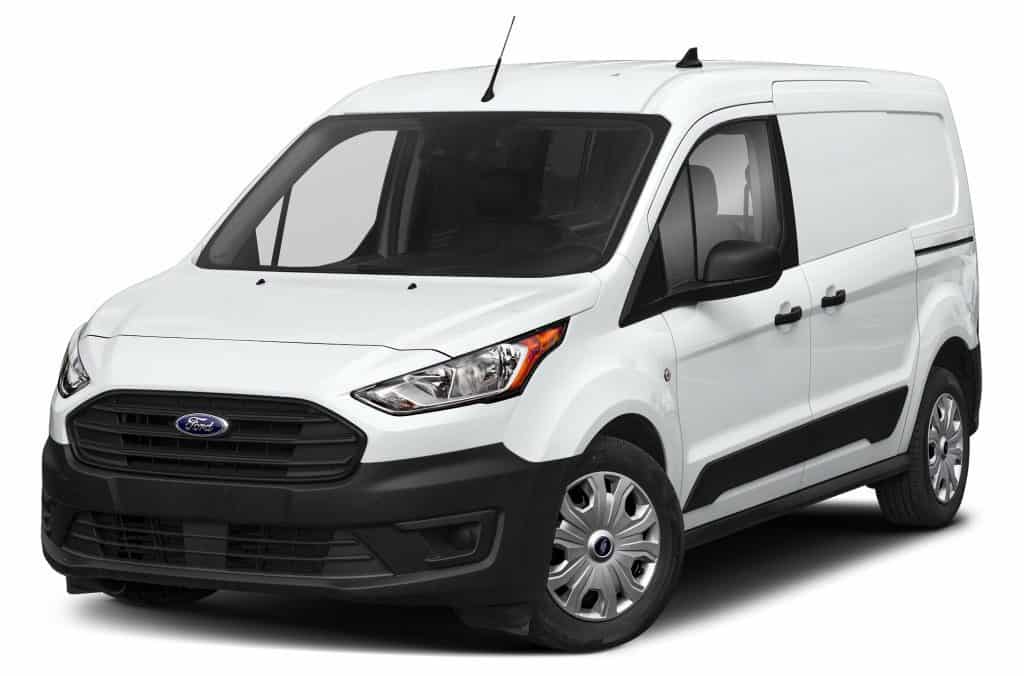
There are many reasons you may decide to choose a minivan camper conversion over a bigger van.
You’ll save money because of the better fuel efficiency. Add to that the superior maneuverability, a minivan can fit in any regular parking space, and you’re less likely to run into trouble when parked in areas where camping is not allowed.
A minivan can blend in with its surroundings, and nobody expects that there are people camping in it.
Some popular minivans include:
- Ford Transit Connect
- Toyota Sienna
- Honda Odyssey
- Chrysler Voyager
- Dodge Grand Canyon
Click here to see minivan conversion examples
Box Truck
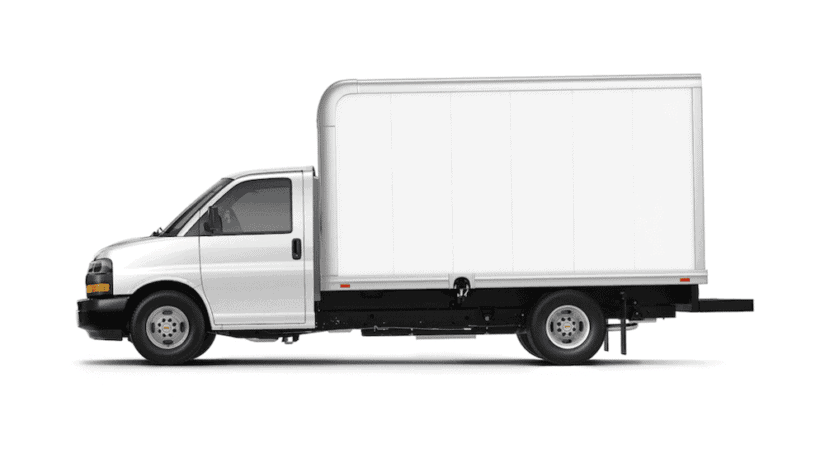
I used to think box truck conversions would be too unwieldy to drive, therefore I always discounted them.
But considering the space inside, and the typically square shape of the trucks, they are a great option and give you a lot of flexibility to turn them into beautiful RV homes.
Click here to see box truck conversion examples
School Bus

School buses are the widest vehicles on this list. Often coming with a whopping 90″ of interior space (7 foot 6 inches). That’s wide enough to have a literal giant sleep side to side.
They also look pretty badass. I don’t know if it’s the design itself, the nostalgia, or a mixture of both. But there’s something about them that just looks… cool. They have that classic allure to them the same way the old school VW buses do.
The generous internal space, striking look, and robust build quality makes them a common choice as a camper conversion.
Click here to see school bus conversion examples
Ambulance
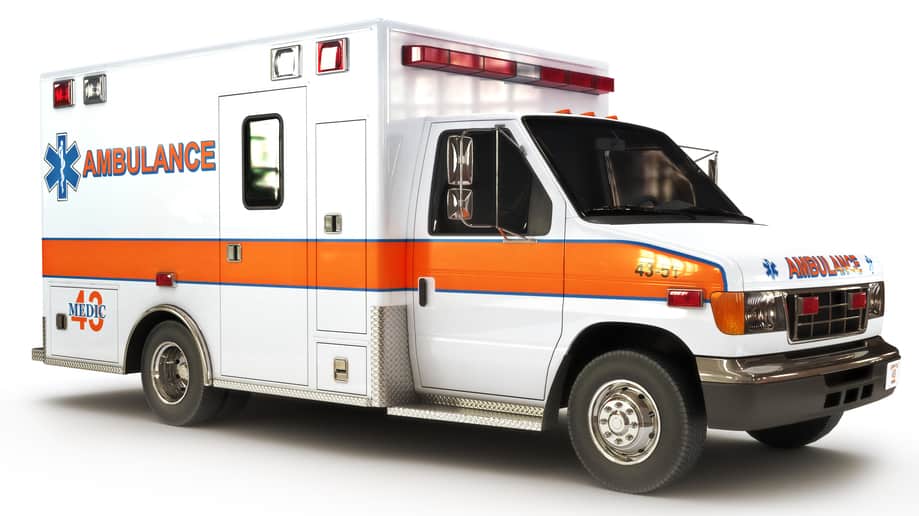
As these are emergency vehicles, ambulances are built to a very high standard.
They also come with many preinstalled features that a vanlifer wants in their van. This might include insulation, rear-seating, cabinets, lighting, air conditioning, power inverters, heating and so many other features you’re likely to want in your conversion.
What also makes them ideal as conversion vans is their interior width, with some models being built to be as wide as the roads legally allow.
Click here to see ambulance conversion examples
Classic Vans

These are very much in the collector category these days. Being highly sought after and hard to find, they can be very expensive. Some of my favourites in this catgory include:
- VW Minibus
- Toyota Hiace (these are still common but the older models are in the classic category)
- Mitsubishi Delica (The L300 being a long time personal favorite of mine)
Click here to see some more vintage bus conversions
8 Things to Check Before Buying a Used Van
Shopping for used vans for conversion is like shopping for any other used vehicle.
If you’re new to cars and mechanics, perhaps the best thing you can do is to bring someone knowledgeable along with you. But if that’s not possible, here are the main things to look for when you go to inspect a vehicle.
Rust
A little surface rust is fine, and in many cases with a used van, it’s to be expected. But anything deep or structural may require a major repair job and might not be worth the effort. Make sure to check under the van, on the floor and on the roof for holes or potential leaks.
The wheel arches are another common place to find rust as they are often exposed to water, salt and debris from the road.
Suspension
This can be tricky for an amateur to diagnose, especially without getting the van up on jacks and getting underneath. But as the suspension is one of the most overlooked maintenance areas on vehicles, here’s some big tells to look out for:
- Excessive bouncing – You can feel when a vans suspension is going as you will feel every bump in the road. If the vehicle rides rough and bouncy, the suspension needs repairing.
- Nose diving – The front of the van goes down hard when making a quick stop. This reduces traction of the rear wheels and results in poor breaking performance.
- Uneven tire treads – If you notice one tire has a lot more wear than the other tires, this can be a sign that the vans weight is distributed unevenly due to poor suspension.
- Bounce test – If you suspect the suspension is gone, with the van in “park”, push down on the front of the vehicle with all your weight, bounce it a few times, then release it. Do the same at the back of the van. If the van continues to rock or bounce more than 2-3 times after you release it, the suspension is wearing out.
Having poor suspension can add feet to your stopping distance, so don’t overlook it.
Mileage
Mileage on used cargo vans are often very high. But you have to consider that these miles are usually built up on the highways on long-distance journeys, this means they have exerted a lot less wear and tear on the vehicle than city miles.
So you may want to have in mind a number you don’t want to go over, but high miles on a cargo van does not necessarily mean a tired vehicle.
Tires
In general, it’s a good rule of thumb to keep the tread depth of your tires 3mm or more. As the lower the tread depth, the longer the stopping distance, which can make the difference between an accident and a close call.
So have a look at the tire tread depth, and you’ll know whether the tires will need replacing soon or not. If they do, you could factor that into the cost and try to get a lower price on the van purchase.
AC & Heat
Road tripping is made a lot more comfortable with a little bit of temperature control up in the cab area. Controlling the temperature in the living area is a completely different issue, but before all that, check to make sure the aircon works when you take the van out for a test drive.
Lights
Check headlights, fog lights, brake lights and all other signal lights.
Electrics
Check the radio, internal lights and other electrics. One thing to look out for is dimly lit headlights. If the headlights are dim when the van is running, this is usually a clear signal that something is not right with the van electrics. Diagnosing electrical issues can be complicated, so if you see that issue, it might be best to pass on that van as a potential purchase.
Doors & Locks
Make sure all doors close and lock as they should, especially look at side and back cargo loading doors as they can be the first to have problems in commercial vehicles.
Where to buy a used van?
- Craigslist
- Facebook Marketplace
- Local Dealer
- Gumtree
Other Types of Vehicle You Can Convert to a Camper
- Cargo Trailer Conversions
- Double Decker Bus Conversions
- 10 Best Van Conversion Companies to Build Your Dream Camper
- 10 Best Pop-Top Camper Vans: Top Picks for Comfortable and Convenient Travel - November 6, 2023
- High Living: Discovering Stunning Tree Houses Around the World - October 9, 2023
- 10+ Ingenious Shuttle Bus Conversions (+Important Certification Requirements) - September 27, 2023
